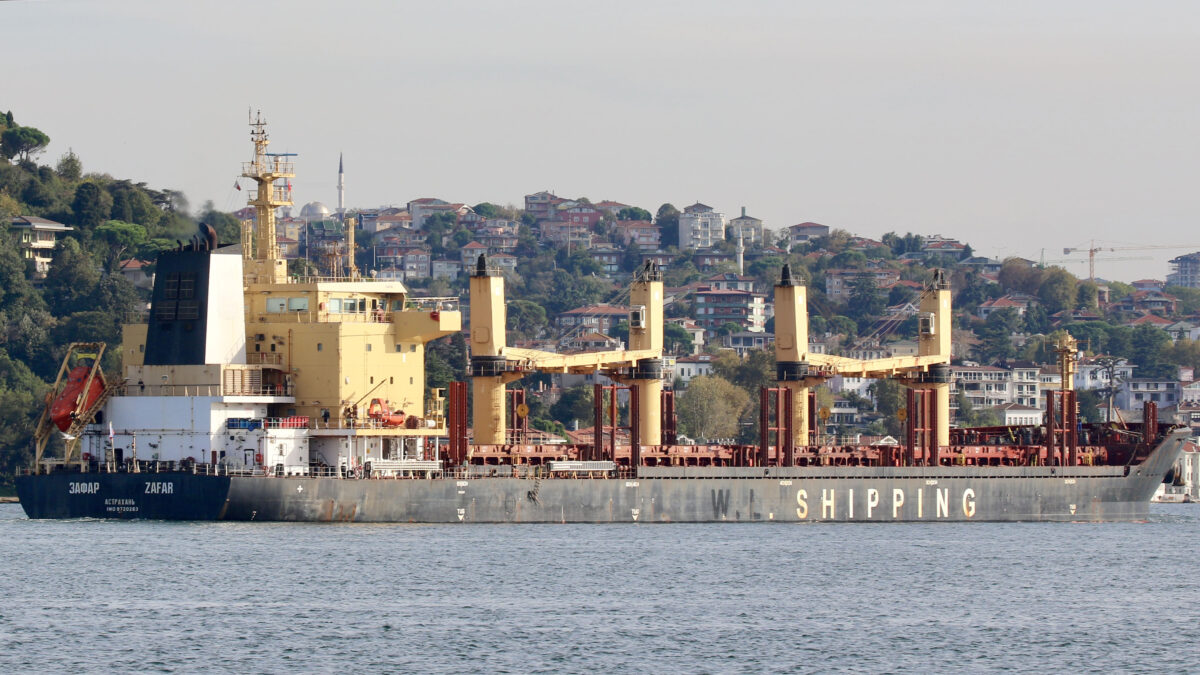Revealed: Around 40 Russian Troops from Pskov Died in the Ukraine, Reinforcement Sent In
The instagram account of a Russian soldier who has recently returned to base from fighting in the Ukraine reveals the rough number of casualties in 76th Airbourne regiment from Pskov and proves Russian activity on Ukrainian territory.

A selfie taken by Egor Lesnikov, geotagged with the base of the 76th Airborne Guards Division in Pskov [Source]
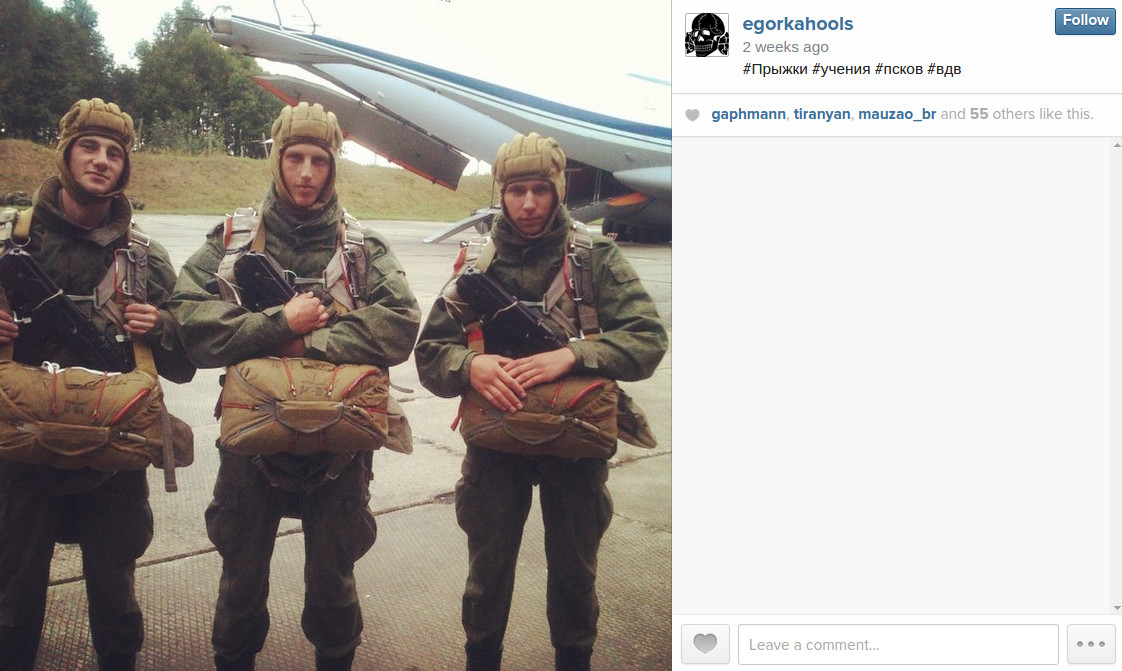
The 76th Pskov VDV regiment gearing up for a training jump. Egor Lesnikov is on the right [Source]
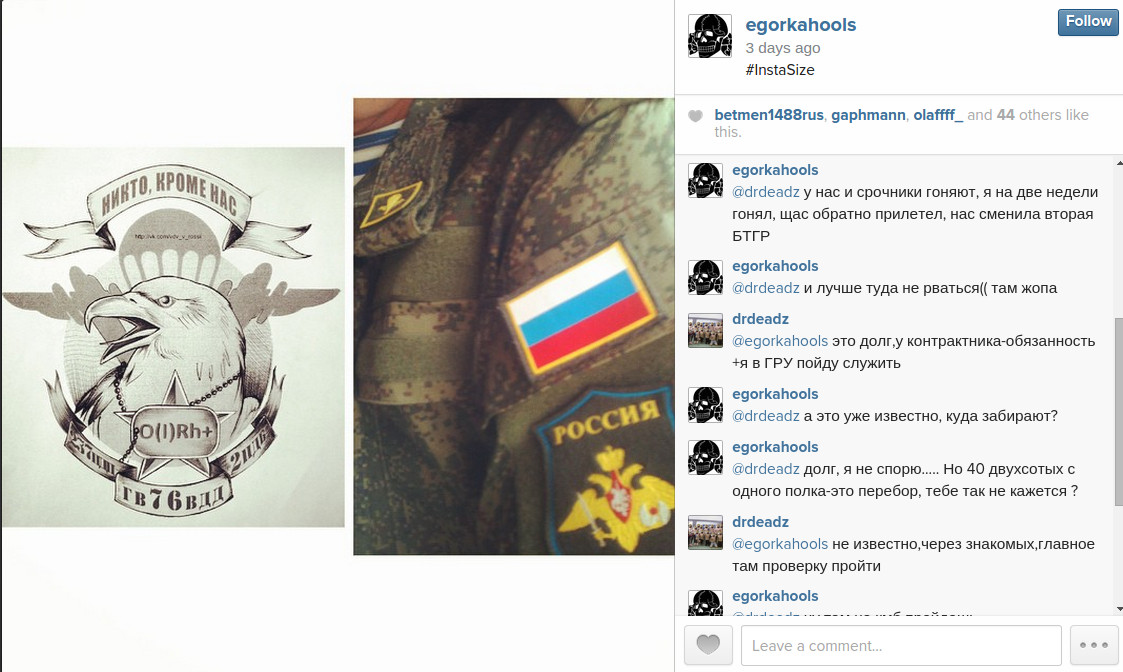
Lesnikov discusses his reluctance to return to the fighting in the Ukraine [Source]
He also says that conscripts as well as fully trained fighters are being sent to the Ukraine, “Our conscripts are going too, I went for two weeks, just flown back”. He sums up the situation; “its best not to rush there… its shit”. Yet, more troops have already been sent in to fight; “we were replaced by the 2nd BTGR”.
Lesnikov’s posts contradict the claims of the Russian Ministry of Defense, which continues to insist that Russian troops have not taken part in any military action, and which keeps denying the casualties among Russian servicemen killed in the war. His past also challenges the narrative of the Russian media, which continues to frame the war as a battle of Russian speakers against “fascism”.
For example, Lesnikov’s display picture on instagram is of the skull and crossbones symbol of the Waffen-SS, he also posted numerous drawings of white power symbols and slogans and even uploaded a picture of himself performing the Nazi salute to an image of Putin on television.
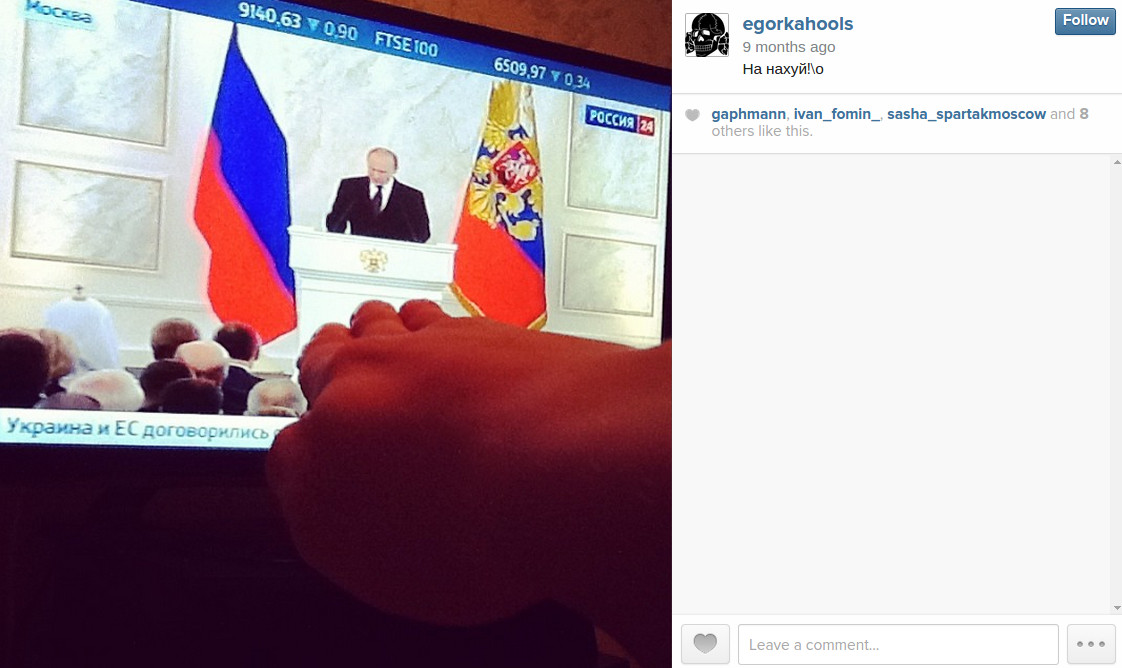
The comment reads “fucking take that”. [Source]
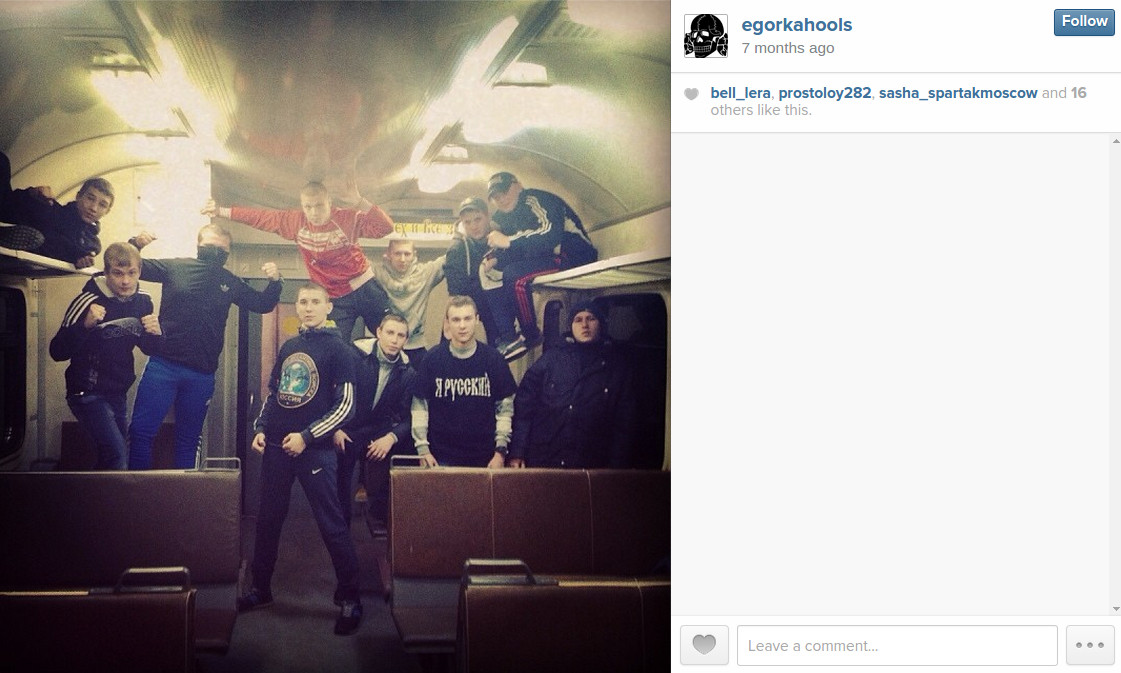
Lesnikov is affiliated with a nationalist Spartak Moscow firm – he has posted videos of large fights with fans of other teams [Source]
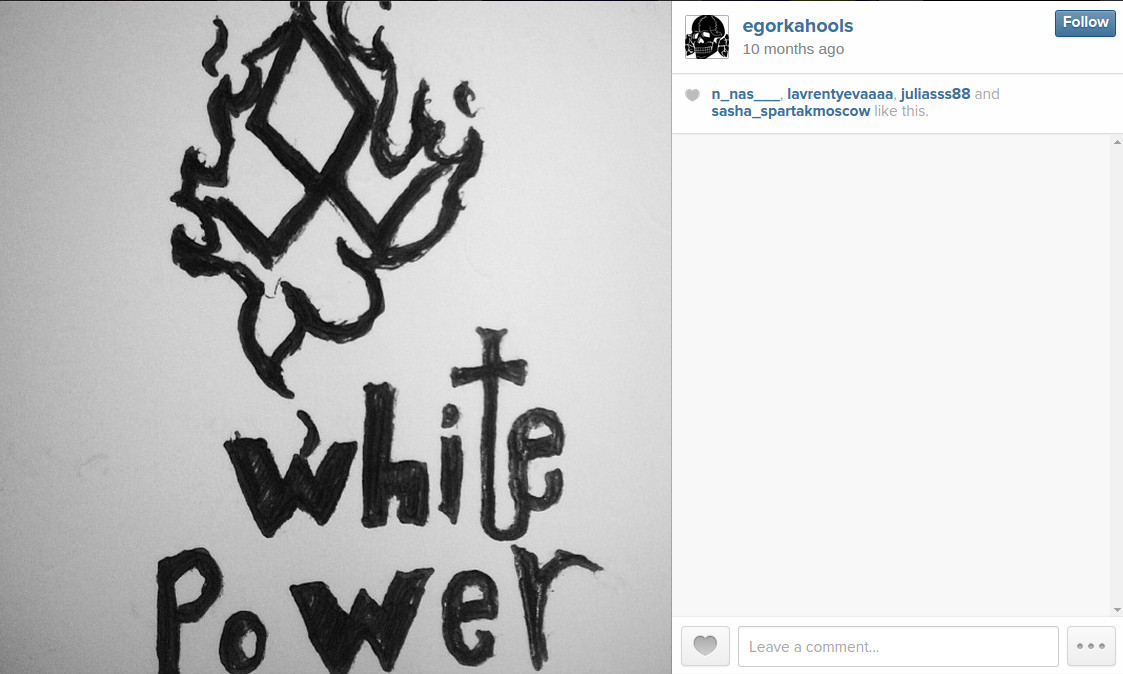
One of many drawings posted by Lesnikov. [Source]
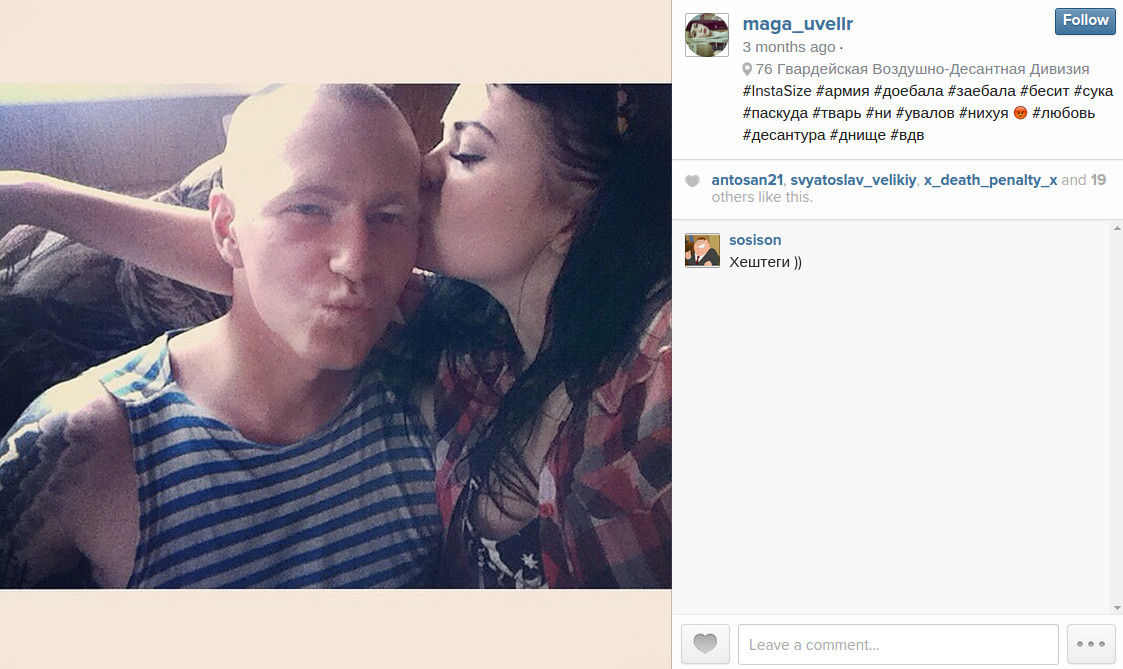
Another soldier from the VDV, images of whom are geotagged with the 76th Regiment’s base [Source]
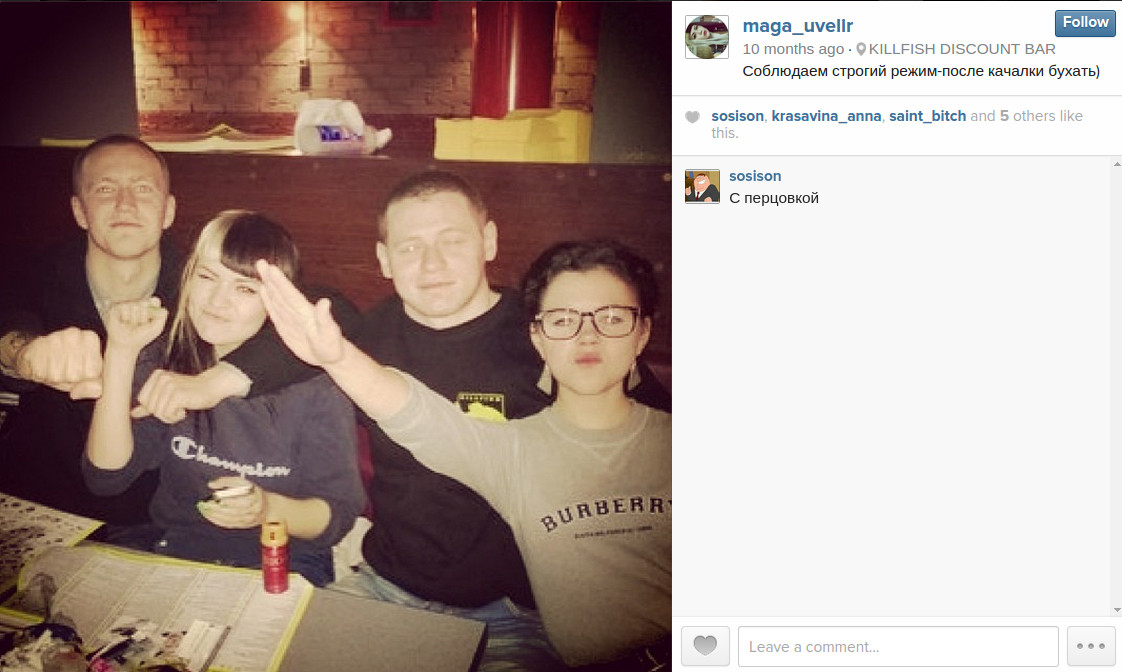
The soldier from Pskov is pictured on the left [Source]
The attack bore a resemblance to what happened to a group of a peaceful protesters a few weeks back. The protesters were part of a movement to demonstrate against vastly expensive mansions that are being built for ministers from Putin’ United Russia party, in gated villages on the outskirts of Moscow. Back then, hooded men who appeared to be working with the police assaulted protesters, smashed their cameras, broke the windows of their cars and placed strips of spikes behind their tires.
Today, Dozhd have reported that the names have been removed from the graves of the killed Servicemen in Pskov. It is clear that Putin’s government will continue to deny the growing evidence of Russia’s military involvement in the Ukraine, and may enforce strong measures to stop the population from finding out the truth about what happened.

